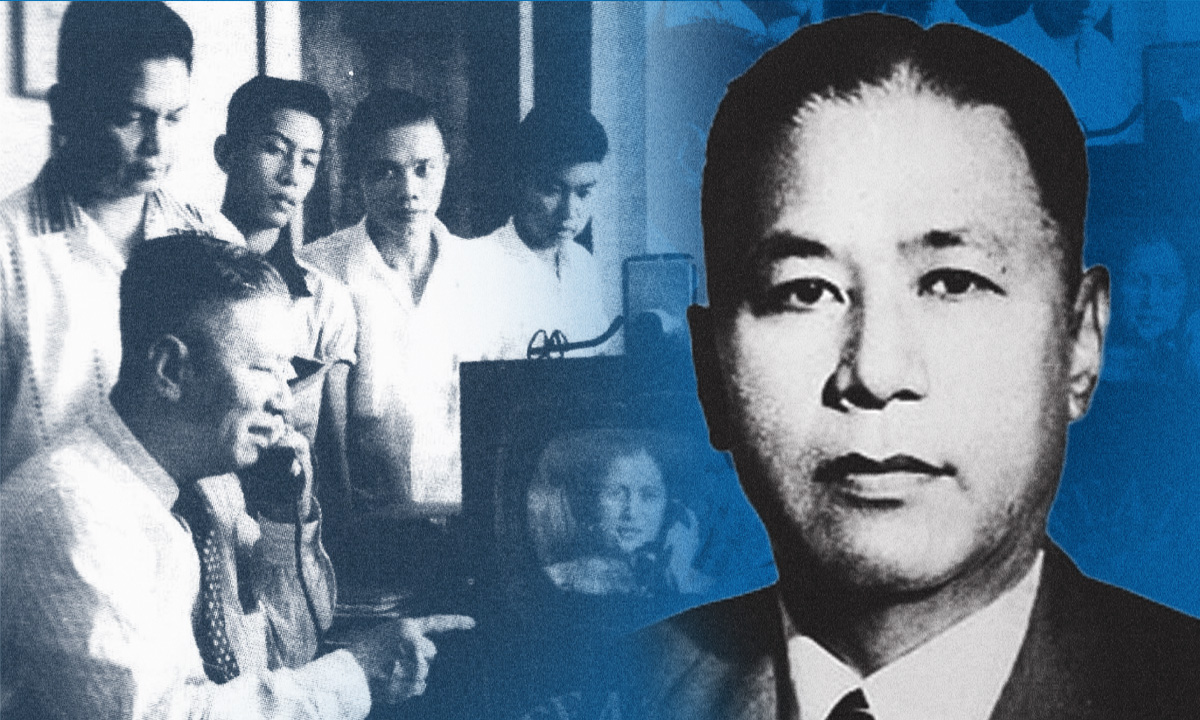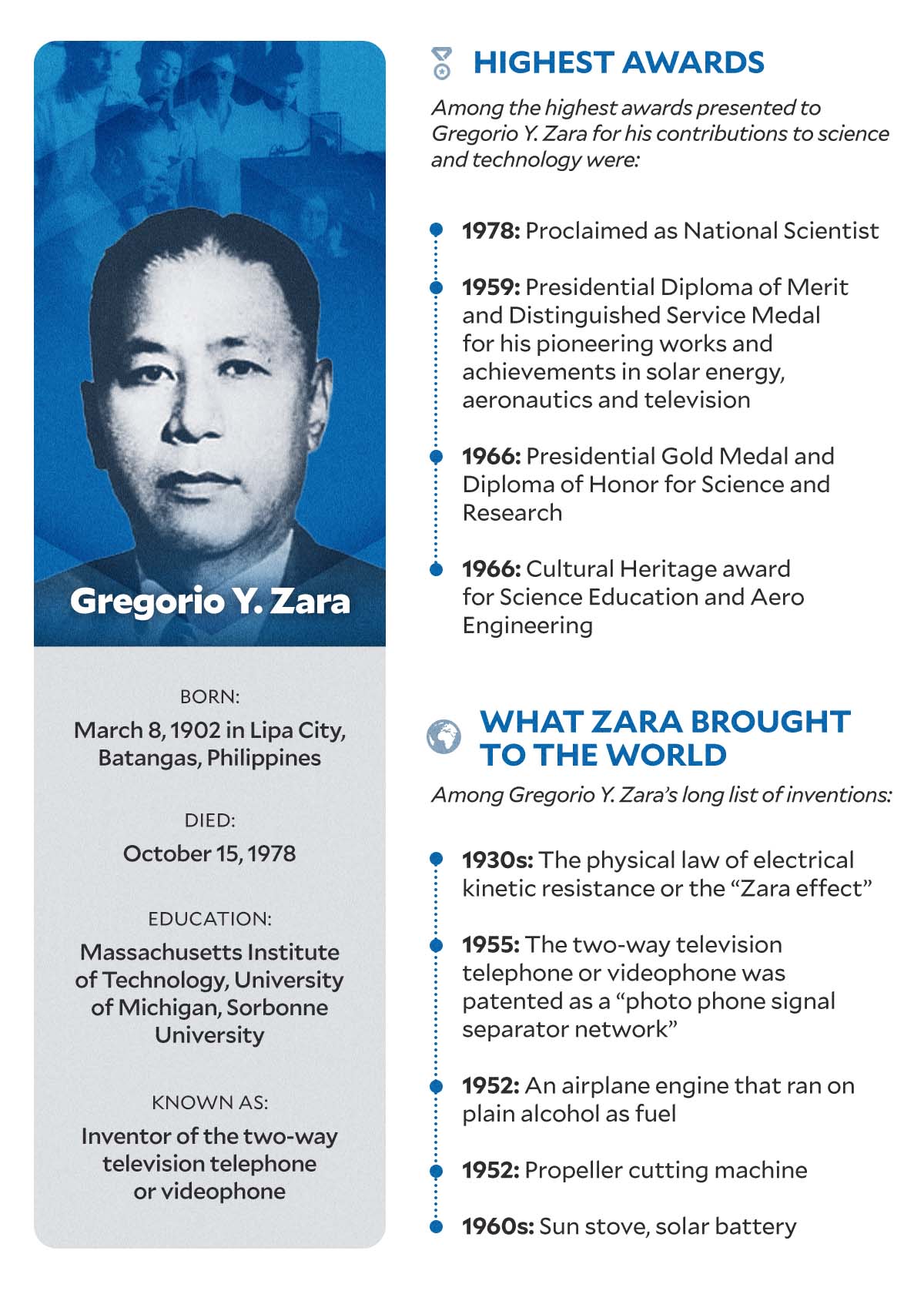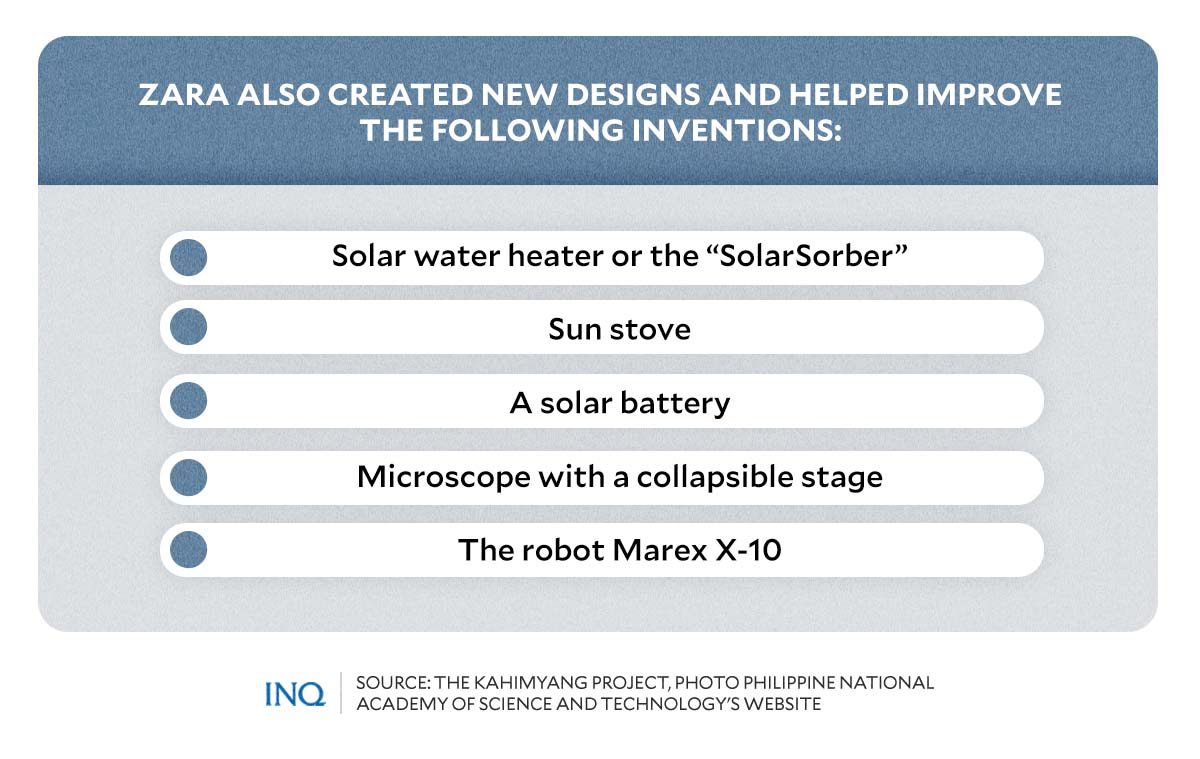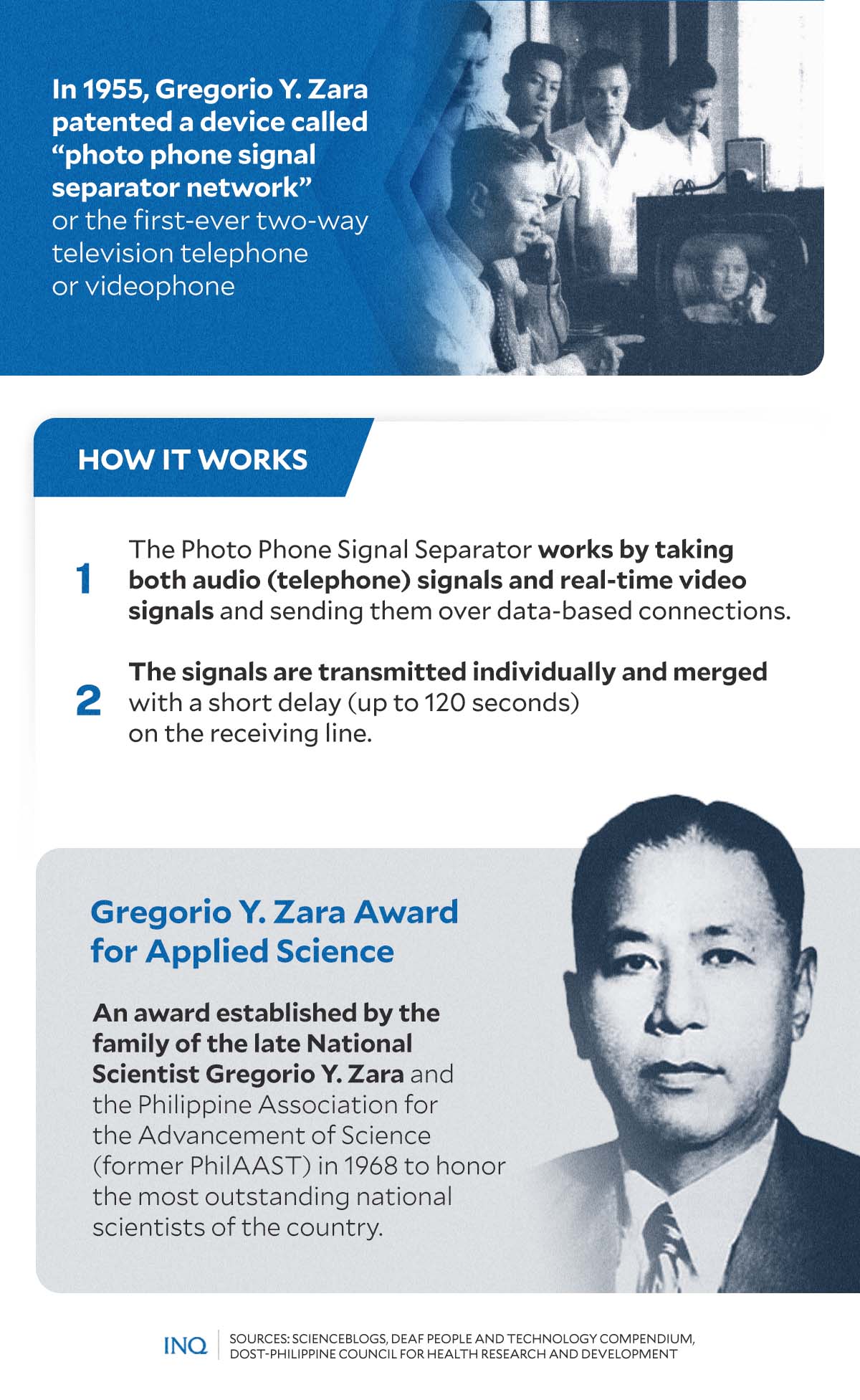Enjoying video calls? A Filipino made it possible

IMAGE culled from photos from Philippine National Academy of Science and Technology’s Instagram account, Philippine National Academy of Science and Technology’s website
MANILA, Philippines—Decades before Skype, Facetime, and Zoom existed, there was a Filipino-made invention called the “two-way television telephone,” which was then considered way ahead of its time.
Video calling—defined as a call made via a device with a camera and screen, allowing participants to see each other as they talk—has become very common in the 21st century as technology continues to improve, leading to the invention of more and improved gadgets and social media apps and platforms.
However, long before the start of the so-called digital age, the concept of video calling or teleconferencing used to exist only in science fiction (sci-fi) stories.
This was until a Filipino engineer and physicist, Gregorio Y. Zara, brought this concept from sci-fi books and comics to life by inventing the first videophone or two-way television-telephone in the mid-1950s.
According to the Philippine National Academy of Science and Technology (NAST), Zara invented the device, which “makes it possible for two persons to see each other on a television while talking on the telephone as early as 1954.”
In 1955, Zara patented this device as a “photo phone signal separator network.”
Ahead of its time
Zara’s two-way television telephone processes both voice and real-time video signals and sends these over data-based connections. The signals are transmitted individually and merged with a short delay of 120 seconds on the receiving line.
Unfortunately, Zara’s videophone did not reach the commercial market. While there is no apparent reason it did not catch on, an online article noted that the patented photo phone signal-separated network was not even intended as a commercial product.
Still, due to his invention that laid the foundation for videoconferencing, some regarded Zara as the “father of videoconferencing.”
In the 1060s, AT&T, a US-based multinational telecommunications company, started working on Picturephone, which, much like videophone, combines telephone and TV sets.
While the Picturephone was released commercially, it did not fare well as it was found to be too expensive.
The videophone started becoming popular during the early years of the digital age or around the late 1990s. Initially, it was popularized as a device that aids people who are hard of hearing.
In the past decades, the videophone underwent a lot of innovation and development. Eventually, devices like smartphones, desktop computers, laptops, and derivations like Skype and Zoom have become accessible to the public, allowing more people to use and experience videoconferencing.
Renowned engineer, physicist
A renowned engineer and physicist, Zara was known not only for inventing an early iteration of the videophone. Throughout his life, he held patents for 30 devices and equipment.
Among his notable inventions were a solar-powered battery, a solar water heater (SolarSorber) and stove in the 1960s; a propeller cutting machine in 1952; the earth induction compass; and in 1952 an airplane engine that ran on plain alcohol as fuel.
He likewise designed a microscope with a collapsible stage, and the Marex X-10—a robot that could walk, talk, and respond to commands.
Zara was also recognized for his discovery of a law of electric kinetic resistance known as the “Zara effect,” defined as “the resistance to the passage of electric current when contacts are in motion. Permanent electrical resistance manifests itself when contacts are at rest.”
Aside from his contribution to science, he was also a known educator. Zara served as an instructor of aeronautics at the Valeriano Aviation School, at the American Far Eastern School of Aviation, and at the Far Eastern University.
“At the FEATI University, he started as a professor of aeronautics before becoming the head of its Aeronautical Engineering Department,” said Project Vinta, a program of the nongovernment youth organization Project Saysay Inc.
“He eventually became its dean of Engineering and Technology and director of research. In 1946, he was elected executive vice-president of the university. A decade later, he served as its acting president,” Project Vinta said.
Zara wrote numerous papers and textbooks in science and physics, some of which were written in French. For a while, he also held various government positions.
“He was appointed technical assistant on aviation matters in the office of the Secretary of the Department of Public Works and Communications [on] his return to the Philippines. He [eventually] became chief of its aeronautical division,” said Project Vinta.
“Afterwards, he served as assistant director and chief aeronautical engineer in the Bureau of Aeronautics of the Department of National Defense. He was also the director of the aeronautical board for more than two decades,” it said.
National Scientist
With his various works and vast experience as an engineer and scientist, Zara received countless honors and awards. Among his many accolades were:
- 1959: Presidential Diploma of Merit and Distinguished Service Medal for his pioneering works and achievements in solar energy, aeronautics, and television
- 1966: Presidential Gold Medal and Diploma of Honor for Science and Research
- 1966: Cultural Heritage award for Science Education and Aero Engineering
In 1978, he was conferred the National Scientist Award, the highest award given to Filipino scientists by the Philippine government. Zara was one of the first three scientists who received this award.
Zara died on October 15, 1978. According to Project Vinta, he was given a state funeral before being buried at the Libingan ng mga Bayani.
Years after his death, several awards have been named in his honor.
“In 1968, Zara’s family and the Philippine Association for the Advancement of Science (now the Philippine Association for the Advancement of Science and Technology) established the Gregorio Y. Zara Award, which honored Filipino scientists and researchers with notable contributions in Basic Science Research and Applied Science Research,” noted Project Vinta.
“The National Academy of Science and Technology annually hands out the Gregorio Y. Zara Medal (also known as the National Science and Technology Week – Outstanding Technology Commercialization Award) to technology generators and developers whose technologies have been commercialized,” it added.


